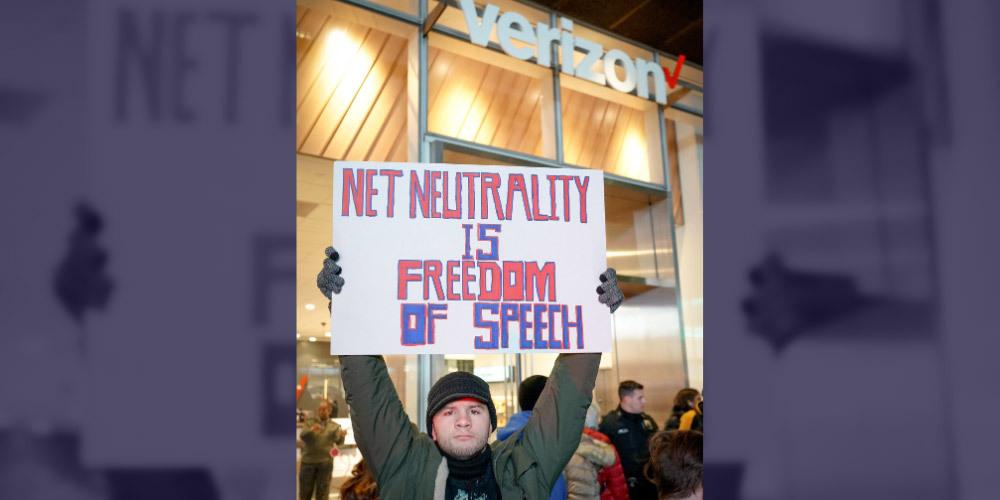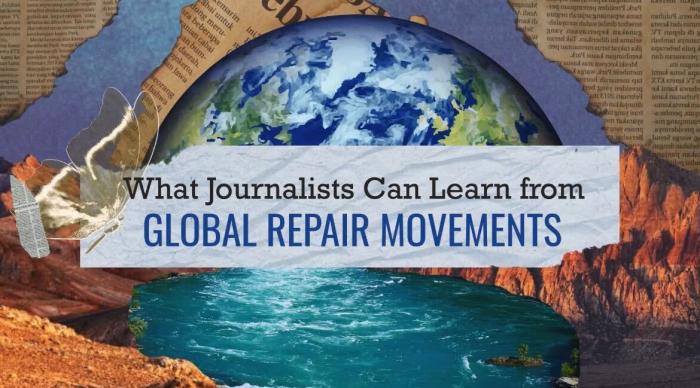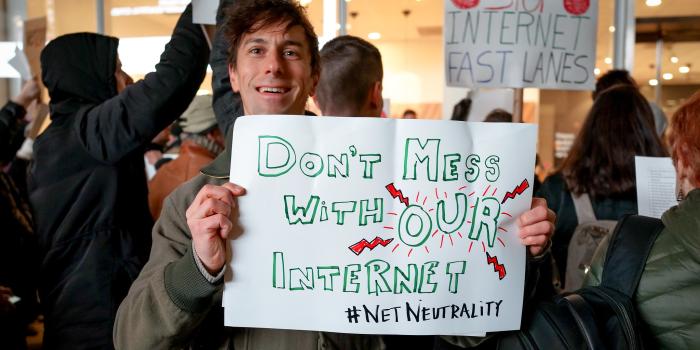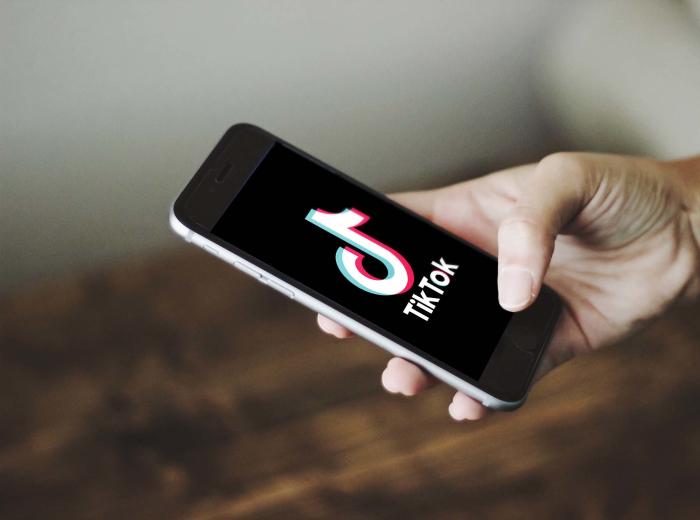What Is Net Neutrality? Myths and Realities

No single issue seems to scare large phone and cable companies more than Net Neutrality.
That’s because Net Neutrality is built on the sound legal notion that broadband access must be classified under Title II of the Communications Act, which gives the Federal Communications Commission the comprehensive authority it needs to hold powerful companies like AT&T, Comcast and Verizon accountable.
Lawyers and lobbyists working for these companies don’t like this, and they are willing to tell all manner of lies to prevent the FCC from restoring the popular rules that the Trump administration dismantled in 2017. Restoring Title II oversight would enable the FCC to protect Net Neutrality — and to track service outages, rein in abuses by monopoly-minded internet service providers (ISPs) and help make broadband more affordable, ubiquitous and competitive.
One of the things we’ve learned during the COVID-19 pandemic is that high-speed internet is not a luxury item but essential infrastructure. Broadband allows people to access education, employment, health-care services, emergency alerts, voting information and more. If you believe that the agency charged with oversight of this infrastructure needs the ability to stop ISPs from ripping off or otherwise abusing internet users, you should support Title II reclassification.
FCC Chairwoman Jessica Rosenworcel now has the votes needed to restore the agency’s rightful authority to protect internet users in this way, and has announced her plan to do just that. To undermine this effort, the industry’s coin-operated sock-puppets have cranked up their Title II myth machine. Free Press is duty bound to debunk these industry lies as we have an untold number of times in the past.
So let’s set the record straight … again.
Myth #1: Title II is ‘heavy-handed internet regulation.’
Despite what these companies claim, Title II authority is not a regulation of the internet itself. Rather, it gives the FCC oversight of monopoly-minded broadband providers that provide last-mile connectivity to users. These ISPs don’t represent the internet any more than lumber companies like Georgia Pacific and Weyerhaeuser represent the forest.
If there are going to be rules for the online road, they must be designed to protect the rights of internet users, and not the profit margins of massive — and massively unpopular — phone and cable companies.
For all the fear-mongering about more regulation, the draft of the “notice of proposed rulemaking” that Rosenworcel released offers a light touch. For example, it explicitly refrains from imposing 26 Title II provisions, while also “clarifying that the commission will not regulate rates.”
“They say this is a stalking horse for rate regulation,” Rosenworcel said. “Nope. No how, no way. We know competition is the best way to bring down rates for consumers. And approaches like the Affordable Connectivity Program are the best bet for making sure service is affordable for all.”
Myth #2: Title II rules are a ‘solution in search of a problem.’
This is the most prolific talking point of the anti-Net Neutrality set. Just Google it. Their claim is that ISPs would never, ever throttle content that they don’t like while prioritizing websites and services that they do. That myth has been thoroughly busted. Over the past two decades, providers both in the United States and abroad have violated Net Neutrality — and they’ll continue doing so absent Title II oversight.
And while these companies now claim to respect the open internet, they have also said that they need to violate open-internet principles to implement new discriminatory pay-to-play business models.
So which is it? The answer is that ISPs will do whatever they can to maximize their profits — like that time that the wireless services of AT&T, Sprint and Verizon blocked access to Google Wallet, a mobile-payment system that competed with a service that all three companies had a stake in developing. Or that time Comcast secretly blocked peer-to-peer file-sharing technologies that its customers were using over its network.
The problem is real. The solution is Title II oversight.
Myth #3: The Biden FCC should be focusing on ‘real problems,’ such as obstacles to broadband deployment and accessibility.
The largest obstacles to broadband deployment and accessibility are the ISPs themselves. This problem came into full view at the beginning of the COVID-19 crisis as people came to rely more heavily on broadband to learn about vital health-care services, search for work, access remote schooling and connect to other essential benefits. At the time, Trump FCC Chairman Ajit Pai implored ISPs to “Keep Americans Connected” — even though he ditched his own agency’s authority to challenge broadband providers that cut people off during such emergencies.
And while hundreds of ISPs signed Pai’s toothless and voluntary pledge, there were widespread reports that these same companies continued to shut off hundreds of internet connections, leaving many people across the United States without access to this lifesaving infrastructure.
Even prior to the pandemic — thanks again to the Trump FCC’s decision to repeal the Title II Net Neutrality rules — the agency lacked the authority it needed to monitor and address broadband outages that threatened public safety. This was especially problematic during times of natural and man-made emergencies, like forest fires, flooding and hurricanes.
Reclassifying broadband access as a Title II service will allow the FCC to require that ISPs address such internet outages. Title II classification also supports FCC efforts to ensure that we have resilient networks that are capable of withstanding and recovering from disasters. And it gives the agency a path to prevent ISPs from throttling first responders’ emergency communications, which occurred when Verizon throttled a fire department’s allegedly “unlimited” data during 2018’s deadly California wildfires.
Myth #4: The FCC’s Obama-era Open Internet Order hampered capital investments, delaying new broadband deployment and innovation.
This is a favorite fib repeated by Trump FCC Chairman Ajit Pai and parroted by industry mouthpieces. It’s also easy to debunk using freely available Securities and Exchange Commission data on broadband capital expenditures before, during and after the two-year period that Title II oversight was in effect.
If broadband investment is the FCC’s preferred metric, then there’s only one possible conclusion: Net Neutrality and Title II were smashing successes. According to Free Press research, capital investments by publicly traded ISPs were 5 percent higher following the FCC’s 2015 Open Internet vote when compared to the two years prior to the adoption of these rules. During this time, cable-industry physical-network investments increased 48 percent compared to the amount invested during the prior two years. Cable ISPs’ core network investments accelerated dramatically in 2016, representing the highest single-year jump since 1999.
ISPs continued to enjoy robust revenue and profit growth in the two years following Title II reclassification, even as wireless consumers saw greater cost declines during this same period. After the Trump FCC repealed Title II in 2017, however, the ISP industry recorded a year of lower aggregate investment. A 2018 decline came despite the Trump tax cuts, which — like massive deregulation at the FCC — were supposed to spur large investments. That didn’t happen.
All the available data indicate that the Obama-era decision to adopt strong rules worked as intended, benefiting internet users, broadband-access providers and the myriad businesses that distribute services over the open internet.
Don’t believe us? Then listen to the executives at major ISPs. After the Obama-era FCC reclassified broadband access under Title II, Comcast’s leadership told its investors that Title II “really hasn’t affected the way we have been doing our business or will do our business.” And Charter’s CEO said: “I mean, Title II, it didn’t really hurt us; it hasn’t hurt us.”
It’s important to remember that the internet economy is about far more than the size of these executives’ salaries or the dominance of their companies. Protecting broadband access under Title II is good for all businesses that rely on the internet to make a buck — a.k.a., nearly every business out there. Anyone who tells you otherwise is ignoring the numbers.
Myth #5: Net Neutrality is a ‘hyper-partisan, politicized’ issue.
This couldn’t be farther from the truth.
If you’ve been on hold for hours with your phone or cable provider, you know the frustration of dealing with companies that feel no accountability to the public. It’s no secret that people loathe these companies: Major broadband providers have repeatedly ranked at the bottom of customer-service satisfaction indices.
Internet users want choices, privacy protections, and a free and open internet. These needs are practical, not political — which is why for years public polling has shown broad support across the political spectrum for Net Neutrality rules and FCC oversight.
University of Maryland public polling in 2022 showed that majorities of voters from all major parties rejected the Trump administration’s repeal and supported reinstating the FCC’s power to protect internet users. It found that more than 72 percent of all those surveyed “favor reinstating Net Neutrality regulations,” including 65.4 percent of Republicans, 82 percent of Democrats and 67.5 percent of independents.
The overwhelming and ongoing cross-partisan support is why millions of people from all 50 states have called on the FCC to enforce Title II oversight, breaking all prior records for public participation in an agency rulemaking.
Myth #6: The FCC lacks statutory authority over broadband-internet access; reinstating Title II is pointless because it won’t survive judicial review.
The FCC has clear authority to reinstate Title II. This authority has survived judicial review on multiple occasions, including a 2005 Supreme Court decision that upheld the agency’s right to exercise its expertise and discretion in interpreting these laws. Moreover, a 2016 U.S. Court of Appeals decision by the D.C. Circuit rejected a broadband-industry challenge and upheld the Obama FCC’s Open Internet Order in all respects, stating that the agency exercised its proper authority when it reclassified broadband-internet access as a telecom service under Title II. And in 2022, the U.S. Court of Appeals for the Ninth Circuit affirmed that California also had the statutory authority it needed to enforce the state’s own Net Neutrality law.
The courts have consistently ruled that state and federal regulators have the power to protect everyone’s right to connect and communicate online, and can choose the correct legal path to prevent online discrimination and abuse by the likes of AT&T, Comcast and Verizon. In the case of the FCC, that path is paved by Title II.
Myth #7: It’s been nearly six years since the Trump FCC repealed the Open Internet Order and nothing bad has happened.
When Pai stripped internet users of the federal protections that flow from Title II oversight, dozens of state-level lawmakers and more than a hundred mayors rushed into the void to put in place local Net Neutrality protections of their own. This patchwork line of defense has managed to restrain the ISPs from moving forward on previously stated plans to throttle the connection of popular websites that don’t pay extra for using their pipes.
Backed by a groundswell of grassroots activism, these leaders managed to hold the line via state laws, executive orders and ISP-contracting policies. The cumulative effect is a loose set of open-internet policies that have prevented much of the outright throttling and prioritization that many had feared. “But when you are dealing with the most essential infrastructure in the digital age, we benefit from one national policy,” Rosenworcel said as she announced her intention to restore a nationwide Title II standard to broadband access.
We agree. The United States needs a national policy so everyone, everywhere is guaranteed the same protections. Having this will help guide changing technology to better serve internet users, and prevent anti-competitive ISPs from stifling innovation and shutting out new entrants to cement their market dominance.
Free Press looks forward to helping Rosenworcel and her colleagues fix Trump-era FCC mistakes, debunk the industry lies and return these basic internet protections to people across the United States.
With a national Title II regime back in place, internet users will be able to log on knowing that their broadband provider won’t violate their online rights without being held to account. And that’s the truth.
Help Free Press bring back Title II Net Neutrality: Donate today.





